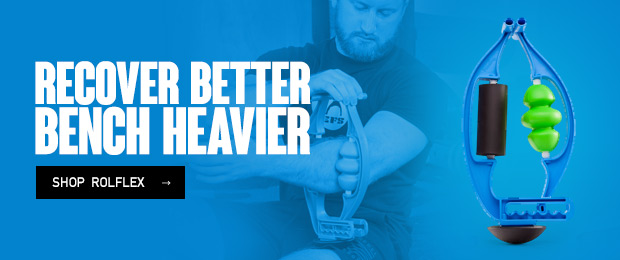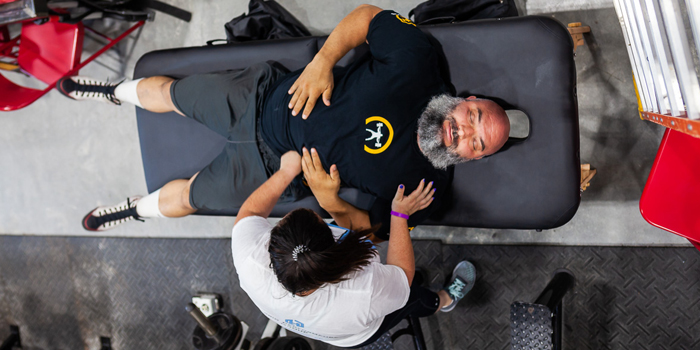
“It depends.”
This is one of the most frustrating combinations of two words in the English language for an athlete. It is the reason for endless discussion, arbitration, and points of view on training, and has caused more than a few arguments.
What program is the best program to get stronger? – It depends.
What plan should I follow to get the best results? – It depends.
How? When? What? Where? Why? Most questions that are asked in the context with which we are concerned about — increasing performance, reducing injury, or dealing with pain — are going to be initially answered with, you guessed it — It depends.
RECENT: Troubleshooting Strength Injuries: Warning Signs of Injury
Why? Because what works for one person may not work for another. This is evident in almost every aspect of life. Furthermore, the most complicated thing in the world is your own body. No random sequence of events, electronic device, or other living being is as complicated as the human body. So, when pushing the body to perform at its best while at the same time trying to keep the wheels from falling off, you’d better believe things are going to be a bit complicated. People adapt at different rates to different stimuli of different magnitudes, and the best training program for one person is not necessarily an ideal match for another.
Furthermore, it can be argued that stimuli from training are one of the LEAST variable and unpredictable stimuli involved in the strength athlete’s training cycle. As we detailed in the first two parts of the TSI series, the body — i.e., the nervous system — does not differentiate between training stress and any other stressors.
Tie that into the fact that both injury and adaptation occur over long periods of time and stress, and we can start to see how the stresses at work, in your environment, in your personal life, or from your current mental and emotional state can compound on each other to the same extent with much more variability than the eight to ten hours you spend per week training.
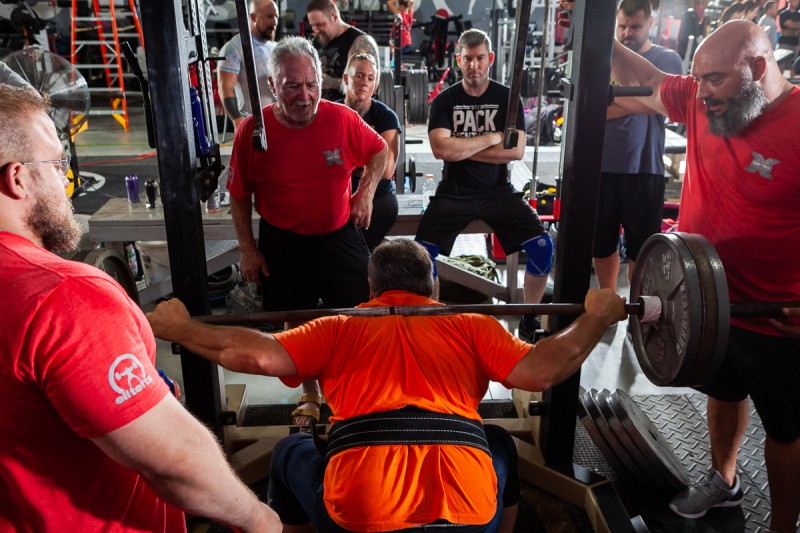
You can also see that no matter how perfect a training block is designed to be, that entering or exiting a relationship, losing a job or working swing shifts, lack of sleep, or even bad air quality can have a drastic effect on your training.
It can also be argued that daily life, work, mental, physical, and emotional stressors aren’t always a big deal. In fact, we could probably point to some people who had their best performances despite having an otherwise unstable life outside of their sport.
Michael Jordan had one of the best games of his career when he was sick. Brett Favre played an almost flawless game on Monday night football just a few days after his father passed away. And you wouldn’t be wrong. In fact, in terms of performance, severe external stresses like that can absolutely cause a boost for the athlete.
But it’s not for everyone, and it certainly isn’t sustainable for long periods of time. Tiger Woods suffered abysmal performances for years in a very mental sport following a scandal with his wife that was propped up and displayed to the world by the media for months on end.
On the other hand, there is such thing as having too little stress. As we all know, the body needs stress to adapt and improve. So by that concept, ZERO stress causes zero adaptation. We do still need stress to drive and force us to improve.
WATCH: I am Dr. Tyrel Detweiler
Pain is another dichotomy that one must navigate. It can be dangerous to ignore pain. Pain is meant to be there to be a warning sign before injury. If your entire body hurts, you should seriously consider what that is telling you before you learn the hard way.
But sometimes you need to learn to ignore pain and push through. If every time you felt discomfort you stopped pushing, there would never be enough stress on the body to create adaptation. Sometimes you will have to lift or play with pain and trust that you are not going to get hurt.
So what’s the right answer? Is it at this crossroads between excess and not enough that we find perfection? This is the sweet spot where stressors are present as motivating and growth factors, but not too much so to where the athlete loses focus or becomes chronically sympathetic, causing a cascade of performance-altering events. The art of being able to pool together the information necessary to fine-tune and modulate the athlete’s training and stay in this sweet spot is called autoregulation.
What is Autoregulation?
Autoregulation is the ability to adapt one’s training and performance based upon the current readiness and adaptability of the body. Autoregulation relies on four pillars:
- The subjective and objective states of the body.
- Recoverability and access to recovery methods.
- The demands and goals of your current training program.
- Faith.
In order to autoregulate, you must gauge and manipulate factors within these four pillars to create the perfect training environment. Each of these pillars should be thought of in term of up and down, positive and negative, etc., and some aspects of one pillar may bleed into the others. This is because each pillar is very much interconnected. The purpose of autoregulation is not just to identify when you need to pull yourself back. It is just as important to be able to tell yourself when to push forward.
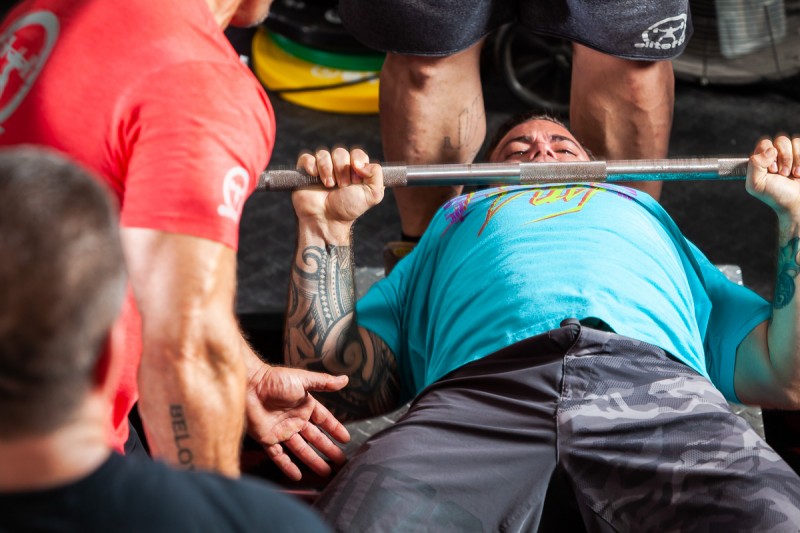
Subjective and Objective States of the Body
These are the measures that tell you specifically “where you are at,” and can be either subjective or objective in nature.
Subjectivity is all about how you feel. This could be your mood when you walk in the gym, how a range of motion feels while warming up, or how a specific weight feels in your hands or on your back. Again, this will also translate to life outside of the gym. Perhaps you feel on edge and irritable with everyone at work. Or maybe you are in an incredibly good mood or more focused.
Subjectivity can also help you identify causative factors to pain or pleasure. If you noticed that you woke up sorer than usual, you might have slept like an asshole. Conversely, if you felt more energy going into a training session after getting a big lunch with some friends when you usually sleep in and only have time for one meal before training, it could be a sign that you need to increase your pre-training calories.
RELATED: Laying Out the Groundwork to Prevent Injuries
Objectively, some lifters have a test or baseline movement from which they can objectively gauge their top lifts by the speed they move the weight or the number of reps they get. At the most fundamental level, this could help set up the next eight weeks of training or determine an opener.
Objectivity also helps you determine how you are likely going to respond to training. If you have worked two extra swing shifts this week, you can bet that you need to pay attention to your training and how it affects you. This pillar is particularly important to track as trends will become clear over time.
Recoverability and Access to Recovery Methods
Recoverability is simply your body’s ability to respond to and keep up with stress. This includes sleep quality and fatigue, overall achiness and soreness from training, motivation to train, getting sick, nutrition and appetite, hydration status, etc.
This pillar can also be a simple log of what you are currently doing for recovery methods, which recovery methods have worked best for you in the past, and what capacity exists to increase those recovery methods should you need to.
This pillar can be a very powerful tool that can be a lifesaver when shit hits the fan elsewhere. Your recovery methods can be anything from dragging a sled, taking an ice bath, or visiting a health care provider.
The biggest key here is this: Don’t abuse these tools. Let information from the other pillars guide your use of these tools. You don’t need to do 45 minutes of active and passive recovery a day, take four contrast showers a week, and see three different providers a week during the off-season.
These recovery methods are designed to boost your recovery, but your body will adapt to them just the same as training if they are not utilized properly. As a rule of thumb, you should have a baseline of recovery methods that are used at all various times of the year and then fluctuate from these baselines as necessary.
Demands and Goals of Your Current Training Program
Much like your recovery, your current training program is a pillar that will provide the most ability to pivot and fluctuate when necessary. Assuming your program has purpose and intent in its structure and exercise selection, this will be a great template from which to also project future planning to reach your training goals.
READ MORE: The Plan: Walking the Talk
This can be changing other metrics in other pillars, such as whether or not you’ll need to increase recovery to match changes in training workload, intensity, or frequency. It may also mean reading the signs from the other pillars to add in a deload week, push the envelope, or hold back the reins a bit.
While you are competing, increasing performance is the main objective. Because of this, all decisions will be made based upon the goals of your current training program.
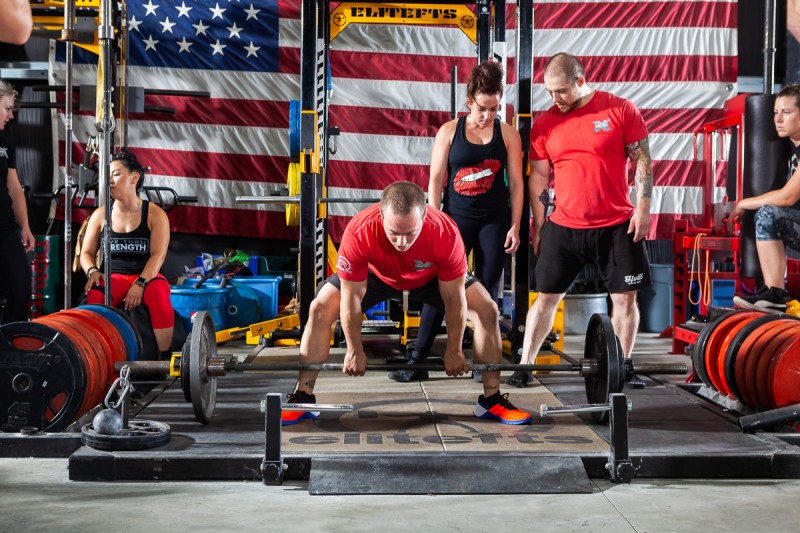
Faith
Perhaps the odd man out to many, this pillar couldn’t be any more important to your success in training, and honestly, life in general. Simply put, faith has to be there. Faith in your ability, faith in others, faith in moving forward one step at a time in complete darkness.
Make no mistake about it, there will be times when nothing seems to be going right, everything seems to be falling apart at the seams, and you have no idea what will happen next. And on top of all of that, you’ll also have training to worry about. You may not want to admit it, but this is where blind faith and belief will carry the day.
Simply put, no matter how hard you plan for what you think is going to happen, that plan will change. You’ll have increased hours and stress at work — or even worse, get laid off. The recovery methods you’ve used in the past will stop working. The movement you thought you finally mastered will go to complete shit and your worst movement will all of a sudden be your best. It’s at this point, whether in training or life, you have to have faith that everything will pan out and be okay, so long as you keep pushing forward.
Unfortunately, although my hope for this series is to help eliminate as many serious injuries as possible, I am not naïve to the fact that those types of injuries will probably always occur. Sometimes they are necessary to fulfill a bigger picture. Sometimes they occur to test the mental fortitude of an individual. Sometimes they are a blessing in disguise and allow the athlete to take some much-needed time off that they otherwise would have never allowed for themselves. But the one constant that has to be there is faith.
Contrary to popular belief, there are not as many career-ending injuries in the strength sports as people would like to think. More lifters leave competition because of lack of faith than they do injury. Lack of faith in the process required for building strength and competence. Lack of faith that a bad situation will get better. Lack of faith that an injury or pain is only temporary and will eventually find its way out of the body. And once that injury is gone, a lack of faith in the ability to persevere against the same stimulus that once broke you. In short, faith is why training and competition in the strength sports have so much applicability to life.
The above examples in each pillar merely represent a few examples of factors that must be accounted for during the autoregulation process. As you finish this article, take some time to go back over those pillars and draw out more specific variables in each pillar that specifically reflect your situation.
Write out the recovery modalities that you have previously used. List out the various stressors in your life, and start making a mental and literal note of how you subjectively feel each day. If you don’t already have your training goals and plan written out, WRITE THEM OUT! And if you have a journal, start making notes of your struggles and how you can overcome them.
Now that we have covered what autoregulation is, we can move forward to detail how you can begin to better autoregulate for yourself in Part Four of the Troubleshooting Strength Injuries series.










